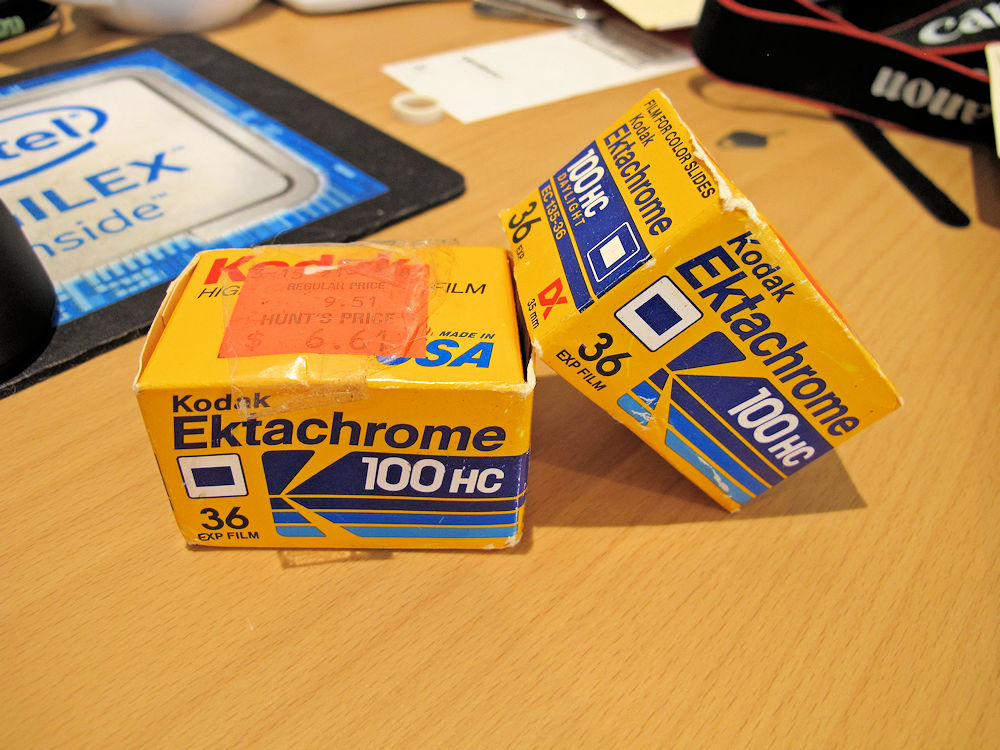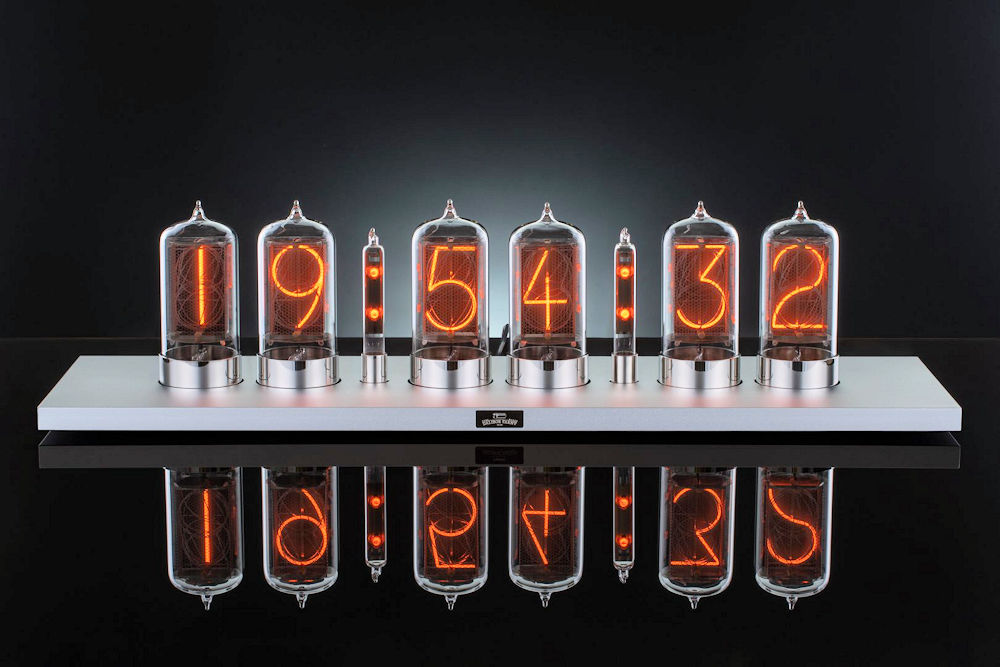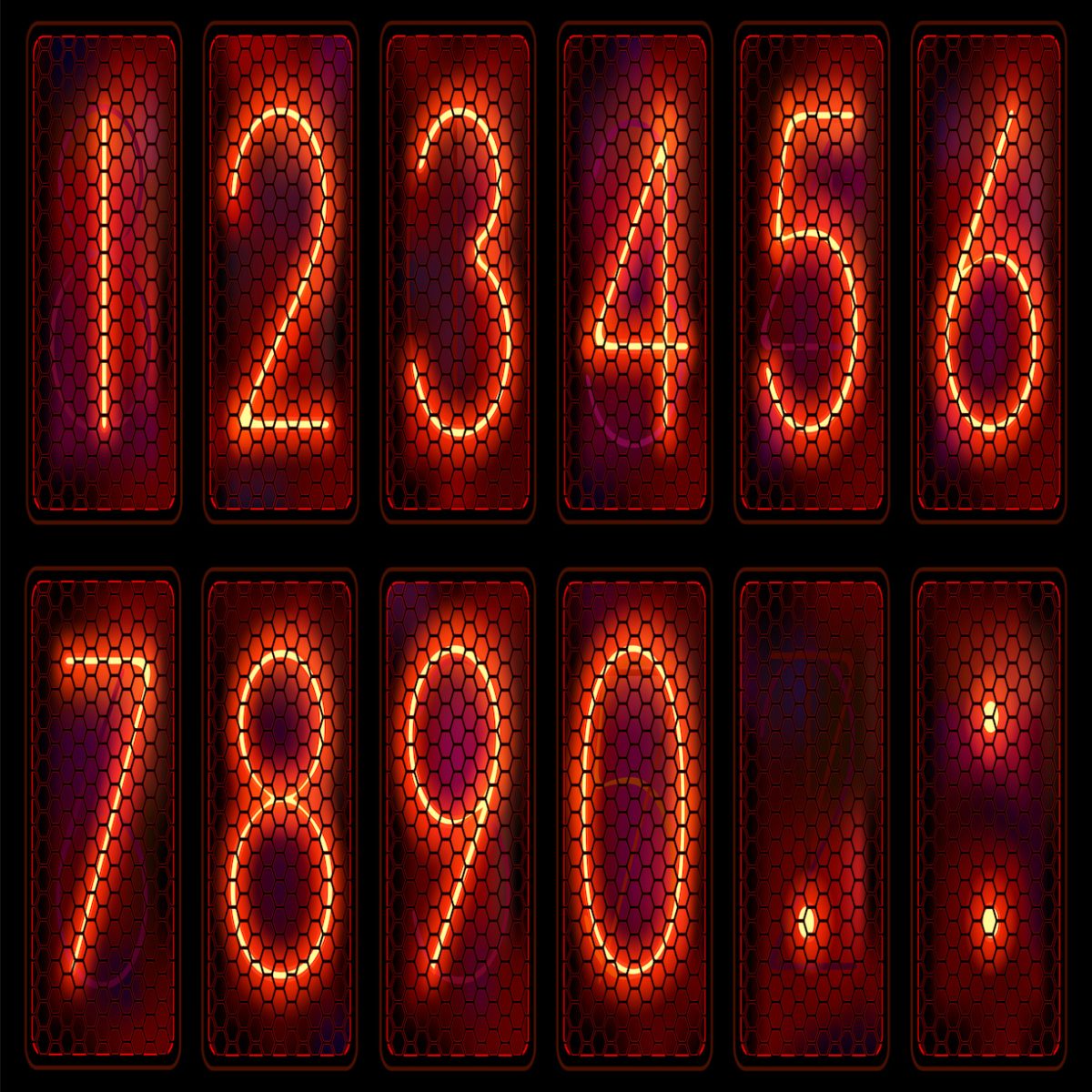Of course, retro-tech nostalgia is not limited to sound reproduction, which I discussed earlier in Part 1 of this article series, so let’s now talk about retro photography nostalgia. For 30 years, I shot photos with an SLR (single-lens reflex) camera using film, starting in 1972. I’ve shot Kodak Kodachrome and Ektachrome slide film, Kodacolor and Kodacolor II print film, Fujicolor print film, Ilford black-and-white film, and assorted film stock from Agfa. So, I’ve taken a lot of photographs using film.

Unopened Ektachrome slide film, left over from my days of film photography. I purchased these boxes of film in 1991 at Hunt’s Camera in Melrose, Massachusetts. The film expired in 1992. Image source: Steve Leibson
After 30 years, I switched to digital photography and haven’t looked back. However, I’ve not taken nearly as many photos as the Canadian commercial photographer, filmmaker, entrepreneur, and YouTube celebrity Peter McKinnon, who has his own YouTube channel with 5.9 million subscribers. McKinnon posts a ton of videos and recently looked back. He rediscovered film. On May 12, McKinnon posted a YouTube video titled “Quitting Digital Photography.” In this video, McKinnon grabs a Leica M6 rangefinder and a light meter instead of his usual, a Canon EOS R5 mirrorless camera, and tags along with a friend who carries a large-format Pentax 67 SLR. The pair of photographers strolled through a neighborhood while joyfully shooting pictures of found objects. Every audible click of a camera shutter brought smiles to their faces. I remember doing much the same thing with my Canon FTbn SLR while taking a photography class at the Camera Caboose in Fort Collins, Colorado sometime in the late 1970s. By the way, a Pentax 67 large-format SLR is a big, heavy piece of gear that’s like an SUV – it weighs more than five pounds with a lens – while the Leica rangefinder is small and lightweight, like a sports car.
After the photo shoot, McKinnon drove to the C41 Film Labs in Toronto to have his film processed. For those who don’t remember or are too young to have known, the C41 film-developing process takes about an hour. Back in the 1970s, there were many 1-hour drive-up kiosks and film labs in every city that would process your film and give you prints in an hour. McKinnon had far fewer choices of where to have his film processed. After processing the film, C41 Film Labs digitized the resulting images and emailed them to McKinnon, who could then edit the digital images in Lightroom. There’s more than a little irony in that process.
For people experienced with film photography, it should be no surprise that some of McKinnon’s images shot on that roll of film were less than stellar due to less-than-perfect exposure or composition, despite McKinnon’s years of experience with still and motion photography and his obvious photographic talent. The same thing happens all the time with digital photography, but you find out immediately and the press of a “delete” button quickly removes the bad shots.
Watching McKinnon’s first YouTube video about his rediscovery of film photography, I vividly recalled my own conversion from film to digital. I refused to convert until Canon produced a digital SLR (dSLR) that was as capable as my film SLRs. Canon’s first attempt, the 10D, suffered from shutter stutter. That’s an affliction that puts a significant lag between the time you press the shutter button and the time you hear the click that tells you the image has been captured. If the shutter lag is long enough, a fast-moving object can move so much that the image’s composition is ruined. In some cases, a very fast object like an airplane, race car, or volleyball player can leave the frame entirely during the lag. Canon fixed this problem with its 20D dSLR, so that’s when I jumped – and I’ve never looked back at film. I’m now several generations into Canon dSLRs, although I suspect that mirrorless digital cameras have nearly obsoleted the dSLR, so there may be no more upgrades for me in the dSLR direction.
Like McKinnon, many photographers have rediscovered film. Shooting film is just different, exciting, and, for many photographers, a refreshing change. But like LPs and cassettes, the number of film manufacturers and film developers has dwindled. Your choices with respect to types of film are far fewer than they were three decades ago, and your choices for film processing labs are fewer still, as McKinnon discovered. It can take quite a while to get film developed these days, which stands in stark contrast to the immediacy of digital photography. There are many other disadvantages to film including the cost of the film and processing, limited dynamic range, and susceptibility to heat damage. In addition, there’s the continual problem of always having the wrong speed film in the camera when you pick it up for a new shoot.
Nevertheless, artistic photographers love specific film stocks for their rendering of images. Note that the term “rendering” implies that each type of film has its own way of interpreting reality, just as each brand of digital camera has its own way of capturing an image that will, and must, differ from reality. I stick with Canon cameras, for example, because I prefer the version of reality rendered by Canon Color Science over the color rendering performed by digital cameras made by other camera vendors. I’m not saying Canon cameras are better. Nor am I saying they’re worse. Remember, it’s just a preference.
Meanwhile, just three weeks after posting the “Quitting Digital Photography” video, McKinnon recognized all of the limitations of film in a YouTube video titled “Already Regretting Film,” where he recognizes all of the obstacles that film puts in the way of a commercial photographer such as the lag between capturing the image and seeing what you’ve captured, the limited dynamic range of the image, the restricted number of film types, the additional cost of film and processing relative to digital imaging, and the mismatch in pace between the slowness of film-based photography and the high-speed, batch-oriented workflow of a 21st-century commercial photographer. McKinnon is a force of nature – a perpetual motion machine. I get tired just by watching his videos.
I had guessed McKinnon would quickly tire of film’s slower pace because slow and easy doesn’t fit his nature. Photo artistes can stick with film for all its nostalgic glory, and they’ll tolerate the extra time and effort to get the look. Commercial photographers can’t afford these luxuries. Today, the only camera most people will use is the one built into their phone, so even standalone digital cameras may be doomed to extinction. Perhaps one day, they’ll wear the cloak of retro-cool.
Our last stop on the Nostalgia Tech Express is a personal favorite: Nixie tubes. Who can resist the warm orange glow of this display technology, which dates to May 1954 when National Union Radio Corp. unveiled its Inditron line of neon-filled indicator tubes. That was eight months after I was born. Then, in August 1955, Burroughs introduced its own line of numerical indicators and gave them a memorable name: Nixie. (Note: Trailers for the recent biopic “Oppenheimer” show Nixie tubes being used at the Trinity test in New Mexico. I think that’s a historical error. Trinity took place in 1945, a decade before Nixie tubes became available as commercial products.)
Nixie tubes quickly captured the instrumentation market just as the industry was starting to develop the first generation of digital instruments such as voltmeters, frequency counters, and the like. Nixie tubes led in the digital indicator market until 7-segment LEDs appeared in the 1970s. LED displays eliminated the high-voltage power supply required by Nixie tubes. Consequently, the Nixie tube market died a quick death, at least in the United States. The USSR (later Russia) and China continued to make derivatives of Burroughs’ Nixie indicators for decades, and the surplus electronic parts market is still fairly well stocked with those devices, although they now cost a lot more than they once did.
However, as with the vacuum tubes discussed earlier, the supply chain for Russian and Chinese components has become strained of late, so an entrepreneur named Dalibor Farny in the Czech Republic revived the technology and now sells newly minted indicator tubes with the familiar orange glow. It’s small-batch production, but it serves the nostalgia market for these tubes, most of which seem to end up in clocks. In fact, Dalibor Farny doesn’t seem to sell individual tubes, however, except as replacement parts. The company’s Web site lists only completed clocks for sale. Very beautiful clocks, which are truly works of art.

Dalibor Farny has recreated Nixie tube technology and sells clocks that incorporate these tubes as numeric indicators. Image source: Dalibor Farny
Personally, I prefer the 7-segment Burroughs Panaplex gas-discharge numerical indicators, perhaps because I built a Heathkit digital desk clock back in the 1970s that used these indicators. Although a resurrected Heathkit offers an LED clock kit, I suspect that a Panaplex gas-discharge clock is far out of reach for the company. If someone would resurrect those beautiful Panaplex display indicators, I’d bet there would be a large market for them as well.
These examples are only a few of the technological objects of desire that once dominated their markets. Nostalgia has brought some of these technologies back from extinction. Perhaps you have a favorite retro technology that I failed to mention. If so, please leave a note in the comments below.
Reference
Jens Boos, The Nixie Tube Story: The Neon Display Tech That Engineers Can’t Quit, IEEE Spectrum, June 25, 2018.






Prior to, or even during the reign of Nixie tubes, there were vacuum tube based decade counters using 10 discrete neon lamps as numeric indicators. There was even quite a movement to use neon lamps themselves in digital logic. The lamps exhibit a negative resistance region similar to Esaki (tunnel) diodes. Oscillators, Flip-Flops (binaries) and simple logic gates could be constructed using neon lamps. General Electric (GE), Howard Sams, and others published books on the subject that can be found on-line.
I’ve constructed several ring counters that make interesting animated wall art, but found modern lamps are mass produced to be nothing more a simple high voltage indicators as found on an electric range. For neon logic to work, the lamps must share similar characteristics for strike voltage and hold current. I spent more time designing and constructing an Arduino based instrument (basically a V to I curve tracer) to sort lamps than I spent hand soldering the ring counters. Oh well, what are hobbies for anyhow?
Indeed, you are correct, neilkf. Before there were Nixies, there were columnar displays with ten bulbs arranged vertically for each decade. HP made some equipment with displays like that in the late 1940s and early 1950s. With the advent of digital voltmeters in the early 1950s, a new display appeared. These days, we sometimes call them Lixies for Lucite Nixies. These displays were stacks of engraved Lucite rectangles side-illuminated by grain of wheat bulbs. You can see these displays in Non Linear Systems and Cubic voltmeters of the 1950s. As soon as Nixies appeared in 1955, they were a hit. Nixies’s competition, incandescent Numitrons, ran a poor second. Nixies were knocked off the mountain by LED displays in the late 1960s and early 1970s because LEDs didn’t require high voltages and were less fragile. Now, we have LCDs and OLEDs.
How about these kind of calculators?
https://americanhistory.si.edu/collections/search/object/nmah_694509
My Dad had one similar to this and I guess I was around 10 years old when I used it and it totally blew my mind. Of course, now, the magic has evaporated, but back then they were quite something imho.
Also, my Dad had a cylindrical slide rule that was the equivalent to a 6 foot slide rule, so more accurate. There are (were) some very creative inventors out there. He also had a “Radionics” kit that allowed you to prototype circuits (radios) but I commandeered it to build a multivibrator, my first project, when I was about 13. I took it to school and was able to make phantom beeps during lessons, a sound that was fairly alien in 1970 though if course these days it would be considered more than banal!
https://www.digikey.com/en/products/filter/vacuum-fluorescent-vfd/103
Digikey still stocks vacuum-fluorescent displays from various manufacturers.
How many vacuum tubes are in service in your kitchen?
VF displays are certainly all around traneusee. I’ve got perhaps two, on a microwave oven and my Onkyo AV receiver, but LCDs have largely replaced VF displays. One thing I’ve noted is that VF displays age badly. HP’s instrument group used custom VF panel displays in many instruments including DMMs and power supplies during the 1980s and 1990s, and they’re known to fade over time and are hard to replace due to scarcity (they’re custom). But, if you’re not looking for decades of longevity, they certainly work fine and look nice.